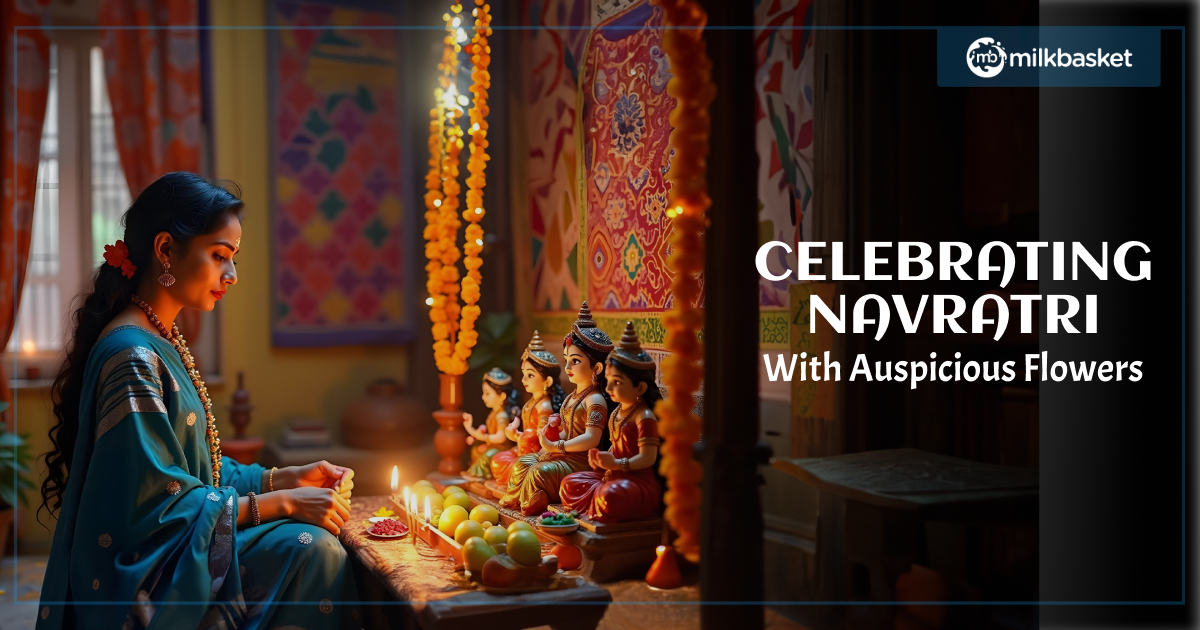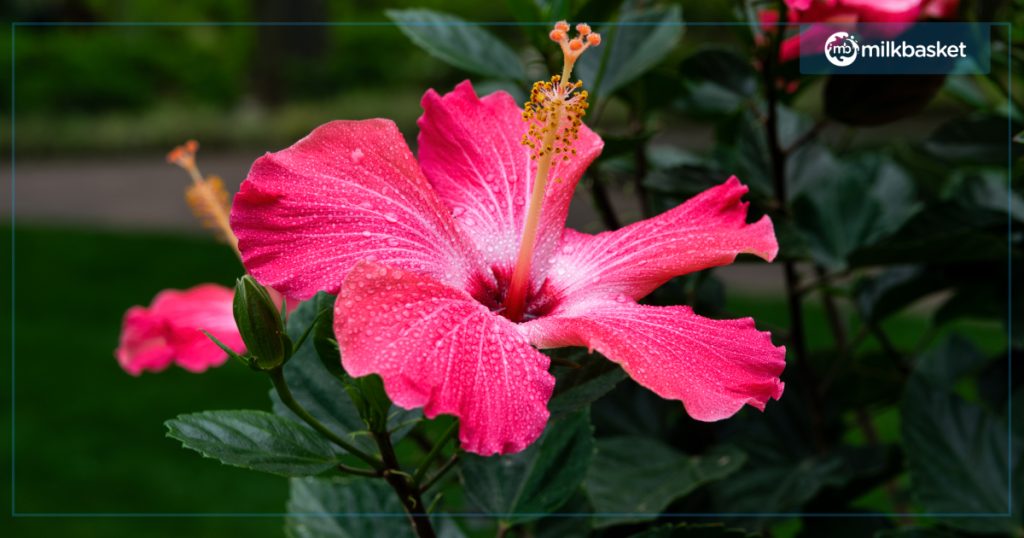

What Flowers Are Traditionally Used In Navratri Celebrations?
People in India celebrate festivals with utmost joy and happiness. Different regions and communities observe various festivals, but some festivals are enjoyed throughout the entire country. Navratri celebration is one such festival. This festival takes place almost four times a year, with devotees widely celebrating Chaitra Navratri and Sharad Navratri.
Devotees celebrate Navratri as a nine-day festival dedicated to worshipping the nine avatars of Maa Sherawali with great devotion. Each day of the festival has its own significance and is celebrated with Navratri flowers and sacred pooja essentials. Many people also fast during Navratri and order groceries online, such as Potatoes, Green Chilies, Sabudana, Sendha Namak, Peanuts, Paneer, Curd, and more.
As we immerse ourselves in the festive vibes of the Navratri celebration, let’s not forget that the nine Goddesses each have a special affinity for different flowers. In this blog, you will learn about the significance of these beautiful Navratri flowers used in the celebration.
It is that time of year when many of us feel the festive vibes. We strive to honor Maa Durga’s avatars during this season. Here are nine Navratri flowers you can offer to Maa Durga’s nine avatars.


Devotees use Hibiscus, one of the most auspicious flowers, on the 1st day of Navratri Puja. Devotees offer it to Maa Shailputri, as it emits divine consciousness. This beautiful hibiscus flower represents health, beauty, and immortality.
Devotees offer chrysanthemum, or Sevanti, to Maa Brahmacharini on the 2nd day of Navratri. It is one of the most sacred flowers used during pooja rituals. The chrysanthemum represents purity and peacefulness and embodies the idea of long life.
On the 3rd day of the Navratri celebration, devotees offer the lotus, Maa Durga’s most loved flower, to Maa Chandraghanta. This Navratri flower represents the detachment of the soul from negative powers.
Devotees offer Jasmine, also known as the Queen of the Night, to Maa Kushmanda on the 4th day of the Navratri celebration. Jasmine has a strong scent, symbolising love, purity, and beauty.
On the 5th day of the Navratri celebration, devotees offer a yellow rose to Maa Skandmata. This Navratri flower is a way of seeking blessings, symbolising new beginnings, joy, and happiness.
Seek the blessings of Maa Katyayani on the 6th day of the Navratri festival with the Marigold flower. This is one of the most commonly used flowers during the Pooja ritual. This auspicious flower wards off negative and evil energies, symbolising purity, warmth, and passion.
Devotees offer Passiflora, or Passionflower, to Maa Kalratri on the 7th day of the Navratri celebration. It is one of the most beautiful Navratri flowers with a unique and abstract design. People also call Passiflora Krishna Kamal because of its distinctive color and texture.
For Maa Mahagauri, there is a beautiful, eye-catching flower famous for its fragrance: Arabian Jasmine, or Mogra. This Navratri flower symbolises purity and beauty and is a favorite choice on the 8th day of the celebration.
Plumeria alba, or Champa, is Maa Shiddhidatri’s favourite flower. Most people offer this Navratri flower on the ninth day of the celebration. Champa symbolises love, purity, and devotion, and devotees use it in ritual offerings.
Maa Durga often holds a lotus flower in her hand, and this gesture carries deep significance:
Sharad Navratri is one of the most auspicious times of the year. To celebrate this joyful festival of devotion and dance, you need hassle-free delivery of various products. Therefore, choosing Milkbasket as your Navratri celebration partner is the best choice. From Dandiya to Navratri flowers to Pooja and fasting essentials, Milkbasket is your one-stop destination for everyday needs. All you need to do is:
No OTP, no call—just shopping ease with Milkbasket. Get all your Navratri celebration essentials from your online grocery delivery partner, Milkbasket.
Friendship Day is the perfect occasion to show your bestie how much they mean to…
Monsoons may bring the romance of raindrops and chai cravings, but they also bring a…
Raksha Bandhan is a beautiful festival that celebrates the precious bond between brothers and sisters.…
The monsoon season brings refreshing rains, but it also brings unique skincare challenges that require…
The monsoon season brings relief from scorching heat, but it also brings unwanted hair problems.…
The month of Sawan (or Shravan) holds a special place in the Hindu calendar. Marked…